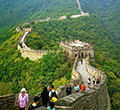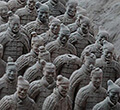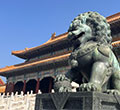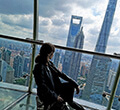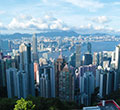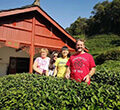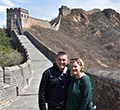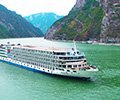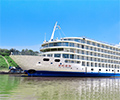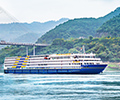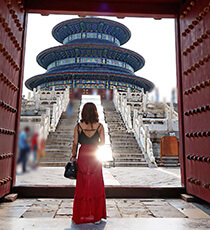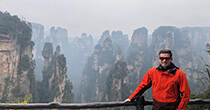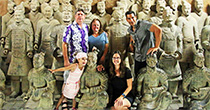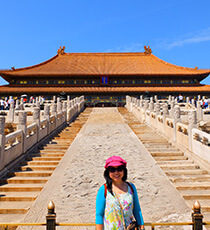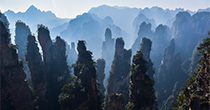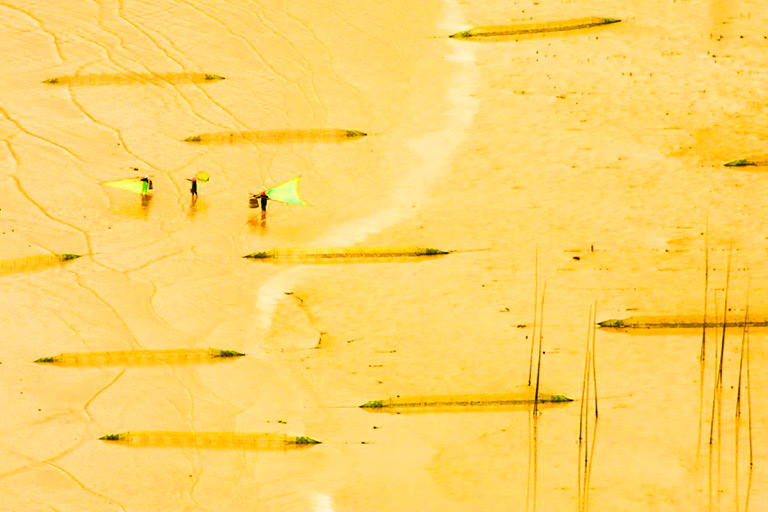Designated as World Heritage Site, Fujian Tulou is the unique rammed earth construction in the world. Tulou was oriented from Song Dynasty and mature in Qing Dynasty. The oldest Tulou has a history more than 600 years. Tulou represents the Hakka Culture which is mainly about unity and endeavor. One Tulou is one small community which contains dozens of families. People lived in Tulou are like a big family, and they help each other and defend against the enemies together. Most of Fujian Tulou is located in Nanjing County and Yongding County. In the two counties, there are five Tulou clusters in total.
Best Sites for Photography
Tianluokeng Tulou Cluster
Tianluokeng Tulou Cluster is located in Nanjing County, and it’s consisted of one square Tulou, one elliptic Tulou and three circular Tulou. Tianluokeng Tulou Cluster is also called “four dishes and one soup” due to its pattern. This Tulou Cluster is preserved intact. Though this site is slightly developed, the local people are simple and sincere and most of them still retain the old customs. You can watch the panoramic view of the cluster from the observation deck besides the cluster, or just enter into the tulou and shoot the inner structure. On the way to Tianluokeng Tulou Cluster, you will pass one interesting Tulou – Yuchanglou or you can call it Zigzag for the vertical wooden post structure is not straight and perpendicular, but zigzags left and right. The zigzag is caused by an error measuring of the building materials. However, due to this apparent infirmity, this tall tulou has survived many rains and earthquakes.
Hongkeng Tulou Cluster
Hongkeng Tulou Cluster was originated from Ming Dynasty. It’s located at Yongding County. Together with temple, school and ancestral hall, Hakka Tulou with different shapes and different sizes were built along the river side. Those earth buildings perfectly blend in the surrounding mountain, river and pastoral strip. The most famous Tulou in Hongkeng Tulou Cluster is Zhengchenglou, which is also called “the prince of tulou”. Zhengchenglou is a double ring tulou, and the outer ring has 184 rooms while the inner ring has 32 rooms. This building was designed according to Bagua concept of Chinese Fengshui theory, however, the inner designs are in rich Western flavors to tell the Chinese and Western cultural communication.
Gaobei Tulou Cluster
Located at Gaobei Village, Yongding County, Gaobei Tulou Cluster is one of the essences of world cultural heritage. Dozens of tulous nest under the mountain and near the river, which presents a great idyllic scenery for us. The most famous one among Gaobei Tulou Cluster is Chengqilou, which is also called “the king of tulou” by its fans. With a diameter of 62.6m, Chengqilou has 370 rooms in total, and the 15th generation Jiang clan with 57 families and 300 people live here.
Chuxi Tulou Cluster
Chuxi Tulou Cluster is located at Chuxi Village, Yongding County. Chuxi Village has more 2000 thousand people and they are all belonging to Xu clan. Chuxi Tulou Cluster contains five circular tulous and 31 square tulous. Jiqinglou is the largest round tulou, which was built in Ming Dynasty. The structure of Jiqinglou is very special, for there are 72 staircases in total, and every family use one staircase. On the back mountain beside Chuxi Village, there is an observation platform and you can see the panoramic view of the whole village here.
Nanxi Tulou Cluster
Nanxi is a river name and it passes through the Hukeng County. More than 100 tulous with various shapes and sizes lie along the banks of Nanxi River. This tulou strip is extended to several miles, just like a long dragon, so some people also call Nanxi Tulou Cluster the “Tulou Great Wall”. Famous tulous in Nanxi Tulou Cluster are Huanxilou and Yanxianglou. Huanxilou is the only tulou without ancestral hall among Fujian Tulou. This is unbelievable in the old times, so people call Huangxilou the most rebel tulou in Fujian.
Best Season for Photography
You can visit Fujian Tulou all year around. Autumn and Spring are most recommended. March to May to shoot Tulou with blooming spring flowers in the village and rice terraces irrigated with water. September to November is best to shoot Tulou with golden rice terraces mountains and villagers harvest in the fields with orange persimmon. June to August is usually to take pictures of Tulou surrounded with thriving green rice terraces and mountains. December to February is great to take photos of local Hakka festivals and folk life. If you are interested in folk customs, December to February, especially lunar New Year period, is a good time to visit. During this time, you will encounter many folk activities, like local wedding banquet, Celebration of the Lantern Festival, etc. However, Labor's Day Holiday in early May and National Holiday in early October are better to avoid from crowded!
Yongding and Nanjing County feature a subtropical monsoon climate, and the weather is relatively moderate with an annual average temperature of 20℃ (68℉). The frost-free days are over 300 days, and the winter is not too cold while summer is not too hot.
Tips from Our Experts
1. Recommended equipment
Wide angle lens and telephoto lens are mostly used for capture the inner designs, outlook and panorama of Fujian Tulou and the surrounding rural sightseeing. Tripod to help to steady the camera is also recommended.
2. Where to shoot
Outside the Tulou, there are usually observation decks or platforms where you can shoot the panoramic view. While inside the Tulou, you can shoot in so many locations. Each floor has its own special perspective to shoot. Normally, the top floor is the best place to shoot the whole tulou. While on the first floor, you can shoot from a low angle and get picture with another style. Local people, wooden furniture and some living staffs in tulou are also great things to shoot.
3. Transportation advice
Fujian Tulou in Nanjing and Yongding is about 2.5-3 hours driving distance from Xiamen, so most people prefer fly or take a bullet train to Xiamen City first and then transfer to Nanjing or Yongding by a hiring taxi or private car. Besides, bus terminals in Xiamen down has limited coaches to Nanjing Tulou and Yongding Tulou for your consideration.Besides, once you get into the Tulou scenic spot, public transportation is limited, so the best way to tour is taking a private vehicle.
4. Accommodation advice
Stay overnight in tulou is an interesting experience, however, the accommodation condition is not very good, and tulou only provide public lavatory. Thus, if you can’t accept this, we recommend you to stay at the hotel near tulou. These hotels have a better accommodation condition. Usually, Taxia Village is most chosen for visiting Nanjing Tulou area, and Yongding downtown is popular for visiting Yongding Tulou scenic area. Comparatively, Yongding downtown offers better accommodation.
